Channel Surfing: What Waves Did Brands Catch in 2020?
Published on January 13, 2021/Last edited on January 13, 2021/9 min read
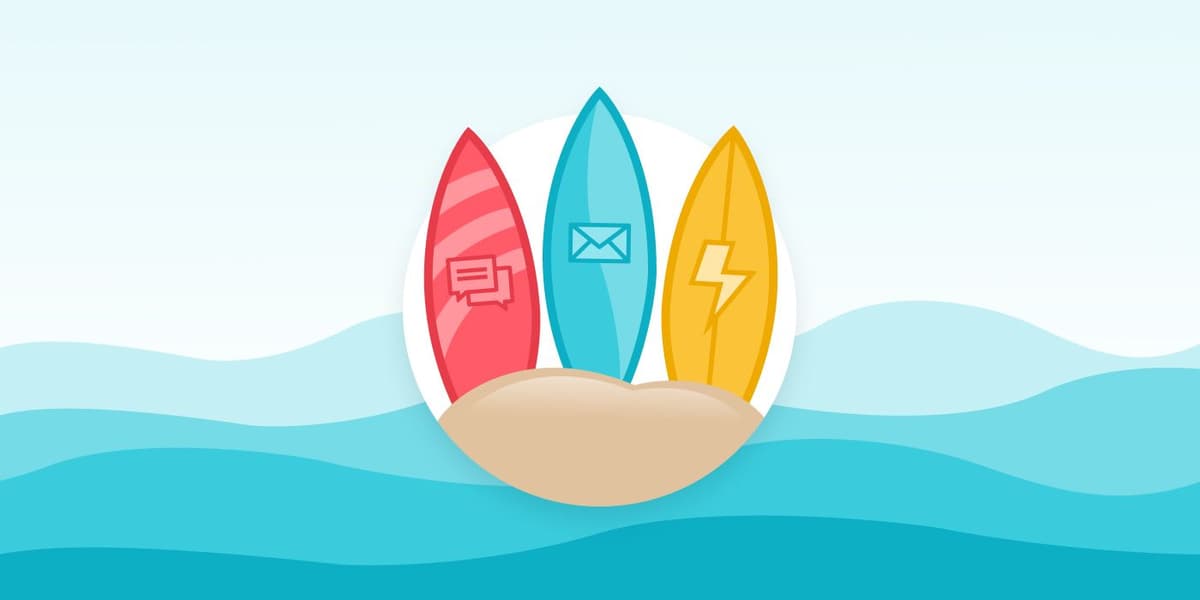

Brendan O'Connor
Customer Insights Analyst, BrazeBy any standard, 2020 has been an eventful year. We’ve experienced a global pandemic, a renewed movement focused on racial injustice, and a business landscape that has often seemed to be struggling to keep up with current events. These rapid shifts have disrupted nearly every part of modern life, up to and including the ways that brands speak to their customers.
At Braze, messaging channels are at the core of what we do. Our customer engagement platform is built to be both channel agnostic and capable of supporting seamless cross-channel engagement, so we’ve got an inside look at a wide array of different channels—from email and push notifications to Content Cards, SMS, and beyond—and how their usage, impact, and more shifted and changed over the course of this uniquely disruptive year. So let’s dig into Braze data to examine a look at a few key messaging channel findings and trends for 2020:
1. The Channel That’s Operating at Massive Scale (Push Notifications)
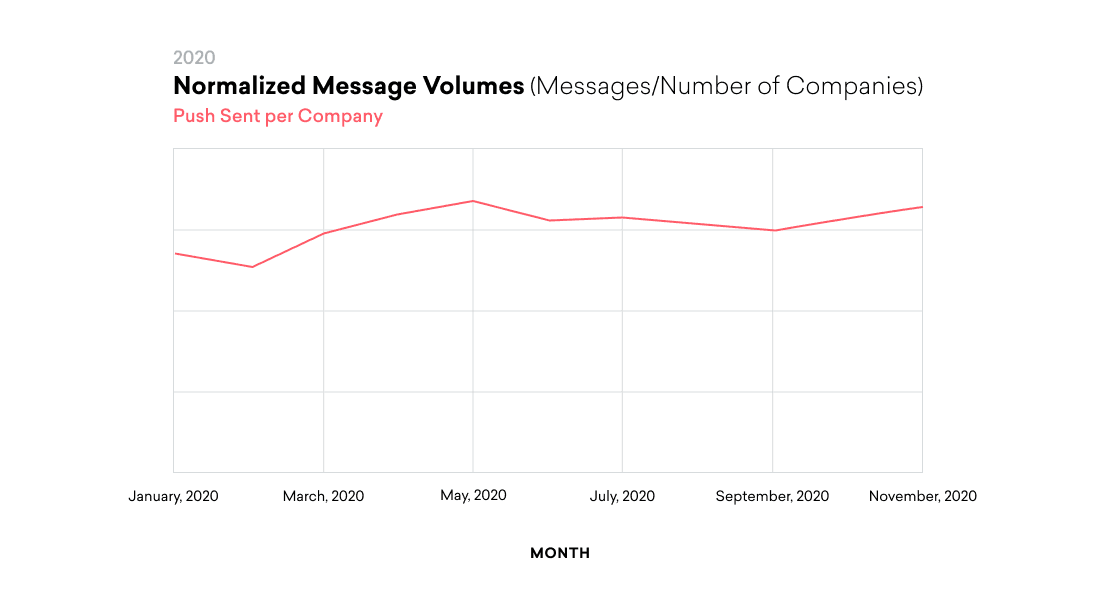
When it comes to sheer messaging volume, push notifications started out 2020 on top and all these months later, it’s still number one. For Braze customers, push notifications are easily the largest messaging channel by volume, with more push notifications sent than all other messages in other channels combined during 2020. But while push spent the year on an upward trajectory—with message volumes growing by about 2% month over month between January and November, for a total increase in volume of 21%—that growth wasn’t enough to keep pace with other, faster-growing messaging channels. The result? An 8% decline when it comes to the percentage of the Braze platform’s total messaging volume that was made up by push.
While the number of push notifications sent this year continued to rise, that increase didn’t lead to a corresponding drop in engagement—in fact, we saw a 6% increase in push open rates during 2020. However, that number can be a little misleading. While web push notifications saw a 30% rise in opens (possible as a consequence of more people spending more time at home on their computers due to pandemic lockdowns), mobile push notification open rates were basically flat. This rise in engagement with web push is a promising sign for this channel...and a reminder that there’s no reason to choose between web and mobile push: You can send both. And with web push open rates jumping and mobile push outperforming when it comes to conversions (6.6X more than web push), that’s arguably the best approach, allowing your brand to speak effectively to both your mobile app and web audiences.
Looking to boost the impact of your mobile and/or web push campaigns? Consider adding a personal touch. Our research found that push campaigns that leveraged Liquid personalization were about 1.5x more effective at driving total opens than campaigns that didn’t. Right now, only about 29% of campaigns are leveraging this key feature, which is a big missed opportunity—but also a boost for brands who do leverage it, since it can do a lot to help their push campaigns stand out in a crowded messaging environment.
Other easy wins when it comes to push include:
- Pairing your mobile and web push campaigns with inside-the-app messages like in-app messages or Content Cards. Combining these channels can significantly boost engagement, provide a more cohesive end-to-end experience and give recipients more motivation to take the actions you’re suggesting.
- Lean into eye-catching images with visual-focused push notifications. Leveraging Push Stories, a proprietary Braze channel featuring an image carousel within an expanded push, or inline image push notifications makes it possible to ensure that the notifications you send are attention-grabbing and highly visual.
2. The Channel That’s Growing Like a Weed (Content Cards)
There’s no two ways about it—Content Cards had a massive year. We saw key new functionality, with Braze launching action-based card removal, which made it possible to orchestrate when cards are sunsetted based on individual user behavior. And we saw the channel volumes rise in a major way during 2020, with volumes up by about 206% between January and the end of November. That’s an average monthly growth rate of 13%!
But while usage of this channel is through the roof, the impact of these messages had a bit of a rollercoaster year. Content Card unique click rates started strong, then saw results dip significantly during the first wave of the COVID-19 pandemic and into the summer, before rebounding somewhat during the fall. That’s not totally unexpected. Many brands leveraging this channel use it to deploy continuous campaigns—and once a user engages with a campaign once, any future engagement with the same campaign won’t count as more unique clicks. Regardless, while this channel’s unique click rates improved from their mid-year low point, they’re still down about 43% as of November, suggesting that brands should keep a close eye on their metrics when it comes to this channel and consider using message testing to optimize the Content Card campaigns that they do send.
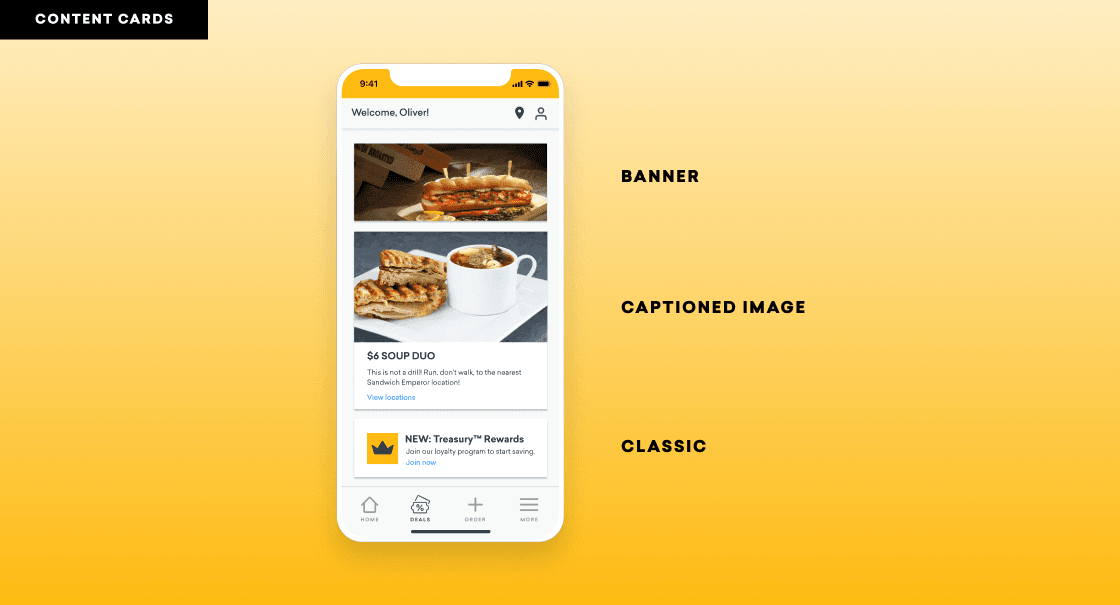
3. The Channel With the Biggest Opportunity (Email)
No matter how you feel about email as a channel, one thing’s for sure—it’s a known quantity. All of us have sent and received emails (well, almost all of us) and it can be hard to imagine behavior related to this long-established outreach option changing all that much. But Braze customers actually saw their email send volumes rise by 32% between January and November and even with these larger sends, our research found that open rates for email rose by 6% during that time, suggesting that users have become more open to engaging with this channel over the course of the year.
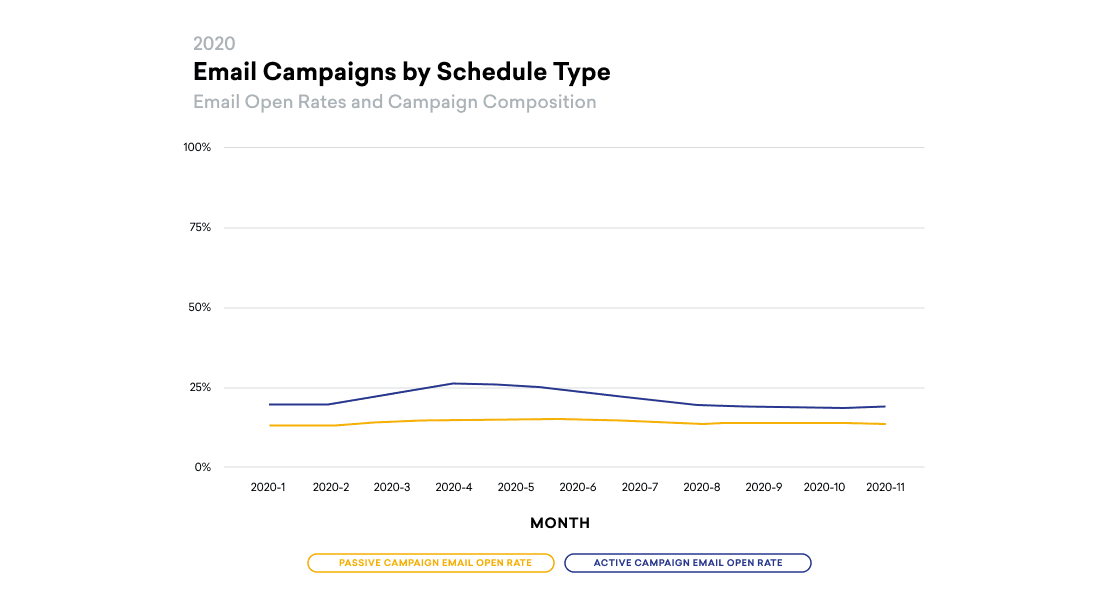
Our research also found that the way brands handle email scheduling can have a major impact on whether users choose to engage with the messages they receive. Over the course of 2020, emails that were triggered in connection with actions taken by users (i.e. “Send when a user puts an item in their cart but doesn’t complete the purchase”) significantly outperformed those that were sent using time-based scheduling (i.e. “Send at 6pm”), with open rates that were about 50% higher. That’s a major difference and a strong proof point suggesting that consumers are interested in receiving emails from brands, but are more interested if those messages are timely and relevant to their actual usage of those brands’ apps or websites.
But while triggered campaigns can juice the results you see from your email marketing program, that doesn’t mean that everybody’s using them. Our research found that only about 9.3% of email sends are triggered, arguably making this one of the biggest missed opportunities for marketers and suggesting that it should be a big area of focus for customer engagement in 2021. After all, there’s still a huge amount of room for growth if you’re able to be thoughtful about the way customers engage with your brand while on your website or app.
4. The Channel That’s Kind of a Late Bloomer (SMS)
SMS is one of the newest messaging channels supported by Braze—in fact, it just had its first birthday this October! Compared to our second-newest channel, Content Cards, SMS saw more modest growth during 2020, with message volumes increasing by about 16% between January and November. But while that annual growth may sound modest, it’s important to note that SMS has been coming into its own over the second half of the year, with the number of campaigns utilizing SMS between Q3 and Q4 of 2020, about 180%. (That’s a big jump!)
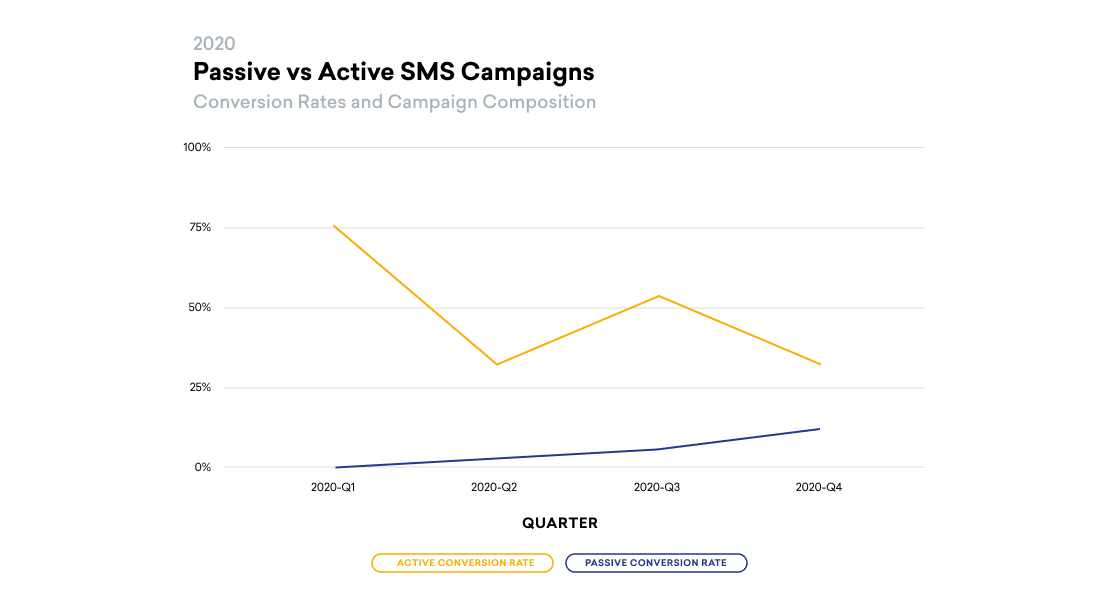
Like email, SMS sees a significantly stronger impact when brands trigger messaging campaigns in this channel based on user actions. In fact, our research found that triggered SMS campaigns drove 11x higher conversion rates in 2020 than those sent with traditional time-based scheduling. We also found that these triggered SMS campaigns saw conversion rates that were stronger than push and email, suggesting that SMS can punch way above its weight if you’re able to deploy it effectively.
6. The Channel That’s Crying Out for Personalization (In-App Messages)
For a lot of brands, in-app messages are a workhorse channel—not always that glamorous, but central to the way marketers drive engaged users to make purchases, watch content, or take other key actions. That’s not intrinsically a bad thing, but it can lead brands to underuse this key channel to drive stronger results.
Our research found that in-app message volume grew slower than any other channel this year, with a 10% total increase between January and November—leading to a 16% decline when it comes to the percentage of the Braze platform’s total messaging volume that was made up by in-app messages. However, we also saw that in-app message click rates increased by about 9% this year, making it one of the biggest gainers in efficiency in 2020 and highlighting the positive impact that this channel can have on your marketing efforts.
As with Content Cards, it turns out that which type of in-app message you leverage can have a big effect on the success of your outreach campaigns. For example, many brands take advantage of sliders—which are small in-app messages that slide into view to capture users’ attention—but where these messages slide from really matters: Our research found that sliders that slide from the bottom of the screen up have a click rate that’s 3.5X that of messages that slide down from the top of the screen.
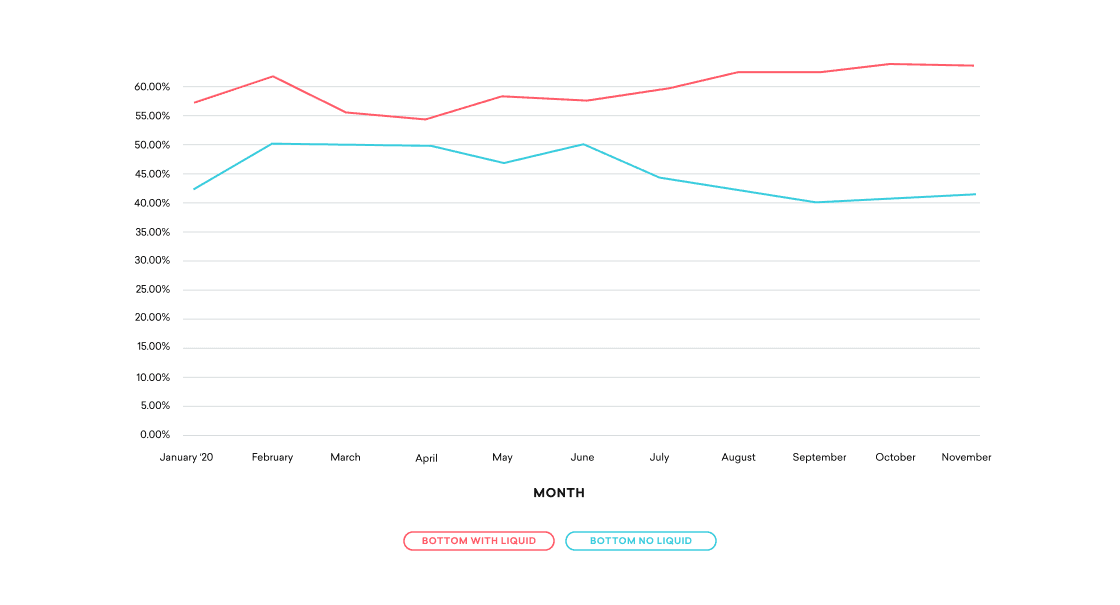
Plus, it’s possible to boost the impact of messages even further by leveraging liquid personalization. When controlling for the slide-up type, IAMs that use Liquid for personalization are about 1.3x more effective than those that do not, highlighting the importance of tailored, relevant experiences to today’s consumer and the value that brands can see from this under-appreciated channel if they just lean into the tools at their disposal.
Final Thoughts
It’s been quite a year. But even with everything shifting and changing on a massive, global scale, a few things stayed true when it comes to customer engagement:
- Personalization is a marketer’s friend—and it can help move the needle for a variety of different channels
- Highly relevant triggered campaigns are more likely to succeed than traditional send-it-at-noon time-based scheduling
- Your brand is your brand, and the results you see may differ from the overall trends our research uncovered...so keep a close eye on your results and use testing to find the best approach for each channel you’re leveraging
Interested in learning more about how to leverage these and other channels effectively? Check out our exclusive look at ideal send frequency to get a handle on how many emails, push notifications, and other messages you should be sending each month.
Related Tags
Be Absolutely Engaging.™
Sign up for regular updates from Braze.


